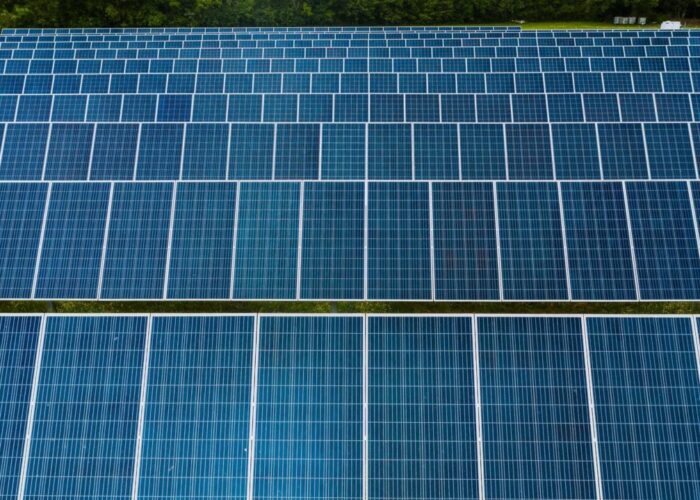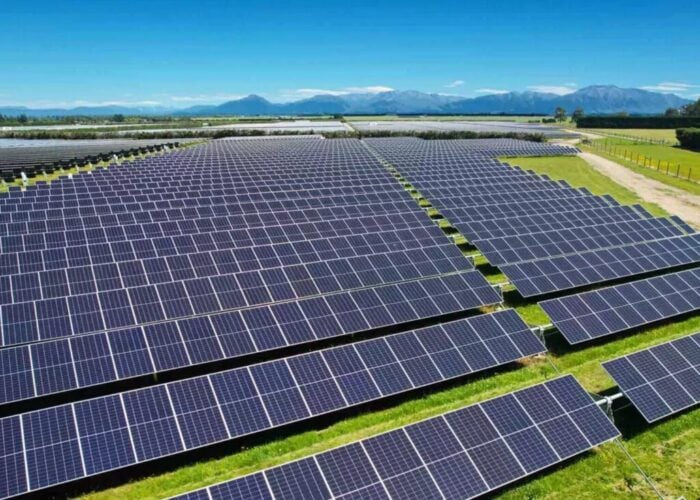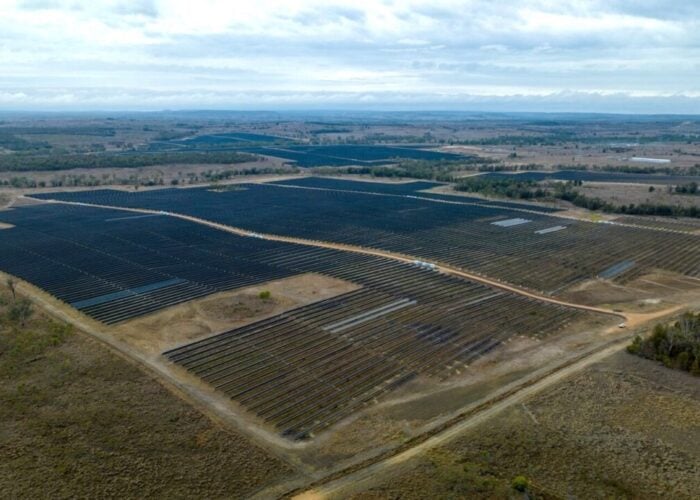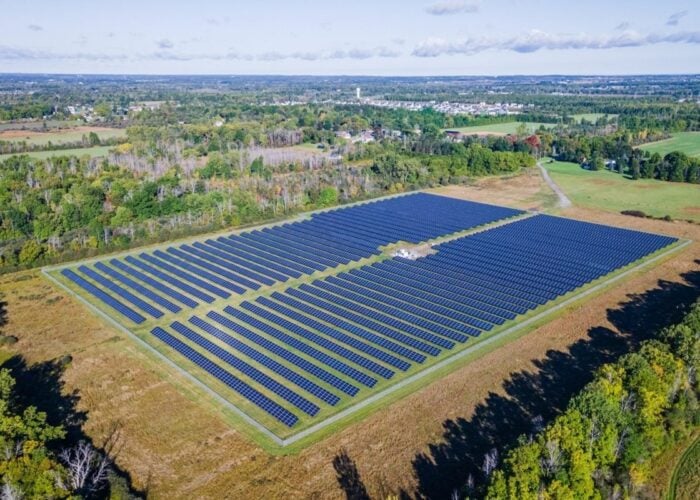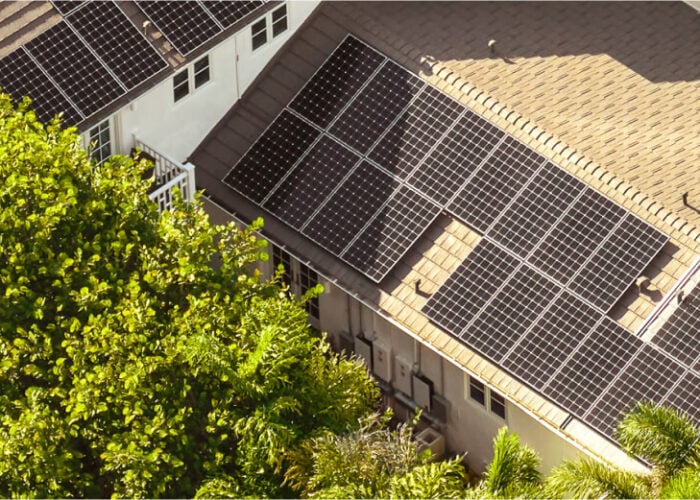
While India’s enormous clean energy tendering programme has stimulated the PV market, it is rife with delays and undersubscription challenges. Prabhakar Sharma, senior consultant, JMK Research & Analytics tells PV Tech Premium that setting targets for capacity awarded rather than just tendered capacity could be a solution, as well as pooling of tariffs for set periods and extending the deadline for a waiver on intrastate transmission. A recent report by the Institute for Energy Economics and Financial Analysis (IEEFA) and JMK Research & Analytics, said that India had issued a record 73GW of utility-scale renewable energy tenders in 2024. However, this came with drawbacks such as a fivefold increase in undersubscribed tenders.
Sharma, one of the report authors, suggests various solutions to the lag in capacity awards and the hesitancy of Discoms and developers to sign off-taker agreements. He also explains why pure solar tenders will peter out over time and how bureaucratic processes are clogging up attempts to solve a major grid infrastructure shortfall.
Unlock unlimited access for 12 whole months of distinctive global analysis
Photovoltaics International is now included.
- Regular insight and analysis of the industry’s biggest developments
- In-depth interviews with the industry’s leading figures
- Unlimited digital access to the PV Tech Power journal catalogue
- Unlimited digital access to the Photovoltaics International journal catalogue
- Access to more than 1,000 technical papers
- Discounts on Solar Media’s portfolio of events, in-person and virtual
Or continue reading this article for free
Have the vast tender flurries worked?
The government mandate to issue capacities of 50GW+ is not perfect, but it is a positive step because it sets a marker for the entire industry, claims Sharma. He believes that the government was hoping that by pushing up the tenders to 50 or even 70GW, the allocations would rise in unison.
However, after tenders have been carried out, there is often a lag in the awards to different bidders. Consequently, IEEFA and JMK have suggested a new mandate that would focus on how much capacity is allotted and awarded to the bidders, as well as how many projects have started construction, to get a more accurate depiction of progress rather than just accounting for earliest-stage tendering.
Sharma suggests perhaps setting a target of ~90% of the tender issuances should be translated into awards.
Solving the PSA backlog
Power sale agreements (PSA) between PV generators and utilities (Discoms) in India are also facing a significant backlog, particularly where the government agency, the Solar Energy Corporation of India (SECI), is involved.
“We have to understand why it is happening,” says Sharma. “We talked about over-issuance of tenders, and if there is a slowness in awarding the tenders, then that will trickle down to other things like the PSAs not being signed. But it is a very complex topic.
However, PV developers told IEEFA and JMK that the key issue was the lack of transmission infrastructure, which is impacting both developers and off-takers.
The government has provided a complete waiver of transmission charges between states for any project commissioned before June this year. Projects commissioned after that will have to pay for transmission charges with a trajectory of the waivers reducing and charges increasing each year.
Again, according to developers, this has resulted in Discoms lacking visibility over when they will get connectivity as well as under which bracket of transmission waivers they will fall, leading to uncertainty and hesitancy.
Likewise, after the awarding of capacity, when developers seek connection with the nearest large substation, there is often a delay due to transmission utilities having to perform complex tasks in readying the transmission, which takes time.
To resolve the unsigned PSAs, Sharma suggests the government could extend the timeline for Interstate Transmission System (ISTS) waivers for at least two to three more years.
“That will expedite the signing of PSAs, because everybody is happy – both the developers and the Discoms,” adds Sharma.
Sharma also suggested that the government could “take a stand” to make a concerted effort to resolve all the unsigned PSAs.
Another reason for Discom hesitancy is the continuously decreasing trajectory of tariffs.
“They think that, okay, the tariff will likely reduce next month in the subsequent auction, so let me wait for one more month, and then I’ll sign the PSA,” explains Sharma.
To solve this, the government could pool all tariffs over a given period of one to three months where one tariff will apply to all projects, which would discourage the Discoms from delaying the signing of PSAs. The government has issued guidelines concerning this pooling, but its wide-scale implementation is lacking.
Grid infrastructure
The government has been actively working to loosen up the grid bottleneck with a national transmission plan, aiming to rapidly increase transmission capacity manyfold in the next five to six years. Green Energy Corridors for the transmission of solar, wind and other renewable energy capacities are also planned across India.
“These two ideas are ambitious, and if implemented, they can address a lot of the issues that we are discussing today, but the issue is in its implementation. There are a lot of bureaucratic processes, and a lot of agencies are involved,” warns Sharma.
The push will need to include the Ministry of power, the dispatch centres at state and national level, as well as the PGCIL, a company which sets up substations and transmission lines along with state transmission utilities.
As a result, the gestation period for setting up a solar and wind plant is much faster than setting up a huge substation nearby where all the transmission lines will be laid.
“Pace is the issue,” says Sharma. “I was in Rajasthan two days ago, where most of the solar infrastructure development is happening. Only two ISTS substations exist there, and six more are being built, but the pace is not satisfactory, so it will take time.”
With more than 38.3GW of utility-scale renewable energy capacity cancelled in India between 2020-24, accounting for about 19% of the total issued capacity during that period, as the report claims, India’s giant clean energy tendering programme could clearly benefit from some innovation.
Do plain vanilla PV tenders have a shelf life?
Despite the rising tide of “non-vanilla” tenders, where solar is paired with energy storage or wind, Sharma believes that the move away from “vanilla” tenders will be a gradual rather than rapid process because more than 50% of the tenders are still only for plain solar and wind.
However, he predicts that in the next ten to 15 years the structure of tenders will change to the point where instead of being based on the capacity of different technologies, off-takers will demand a specific power energy requirement per month or annum. In that case, it will be up to the developer to fulfil that need using whatever renewable technology it sees fit.
Indeed, the shift towards off-takers demanding improved power quality is suggested by the trend of wind-solar hybrid tenders surpassing solar power in 2024 to become the leading segment in utility-scale renewable energy tendering. It is also demonstrated by the shift towards Firm and Dispatchable Renewable Energy (FDRE) projects in India, which require generators to meet specific demand profiles.
India added a record 25.2GW of solar PV capacity in 2024, according to a recent report from Mercom India Research.

